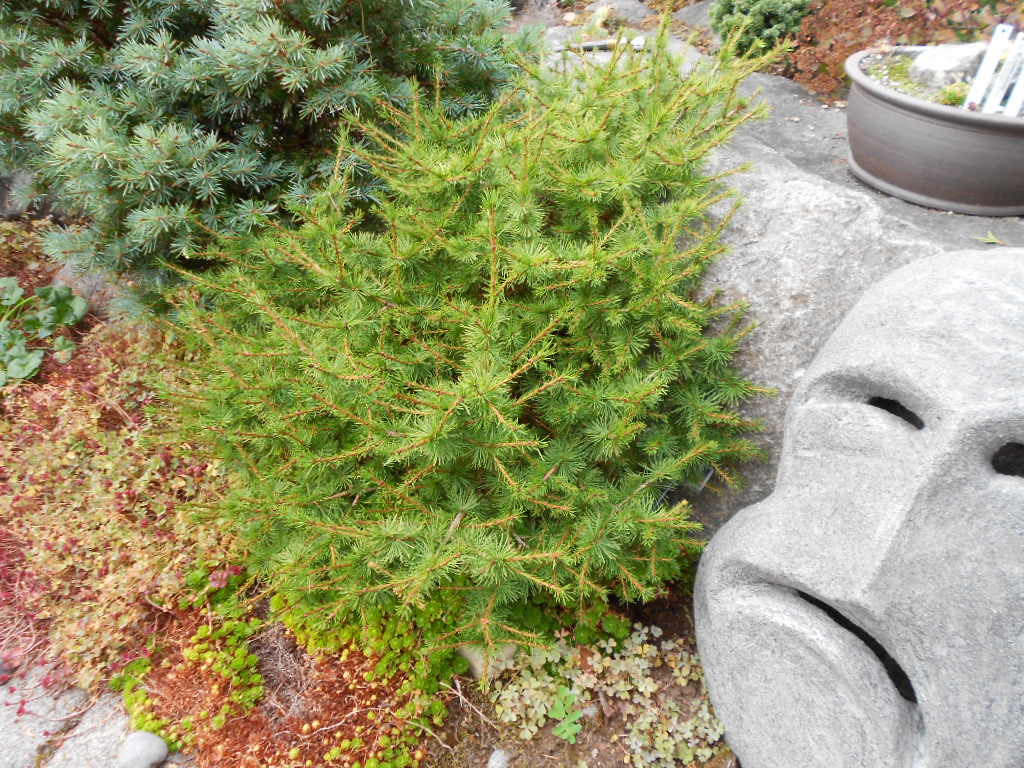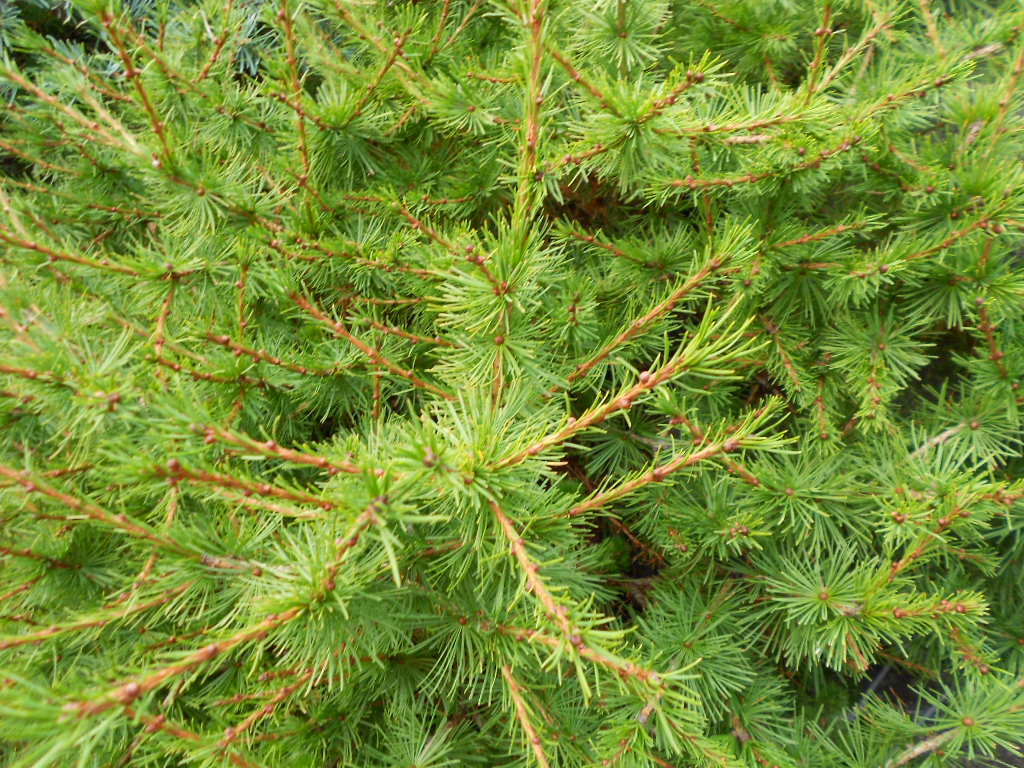
Larix occidentalis 'Bollinger' is one of the very few cultivars of Western larch in existence. This fact alone makes it very valuable to the conifer collector. Needles are bright green, held on short branches, radiating outward in all directions, the classic "broom" shape. Like all larches, this cultivar is deciduous and will shed all needles annually. Yearly growth is between 2 to 4 inches (5 to 10 cm) in all directions. After 10 years of growth, the gardener can expect a globose plant approximately 3 feet (1 m) tall and wide.
This cultivar originated as a witch's broom found in the 1990s by Colorado's Jerry Morris, and is part of his Rocky Mountain Conifer Collection. Jerry found the original broom near the Bollinger summer home located along U.S. Highway 2, west of Kalispell, Montana. In his field notes, he describes a broom 12'™ high, 30 x 40', with short, 3" tight growth. Upon initial collection he gave it the provisional name, L. occidentalis [#1].
This cultivar can be rather fussy in that it's susceptible to fungal issues in the early spring especially in an rainy year. Best luck for long-term survival is to plant 'Bollinger' in a well-ventilated location and well-drained ordinary soil.


